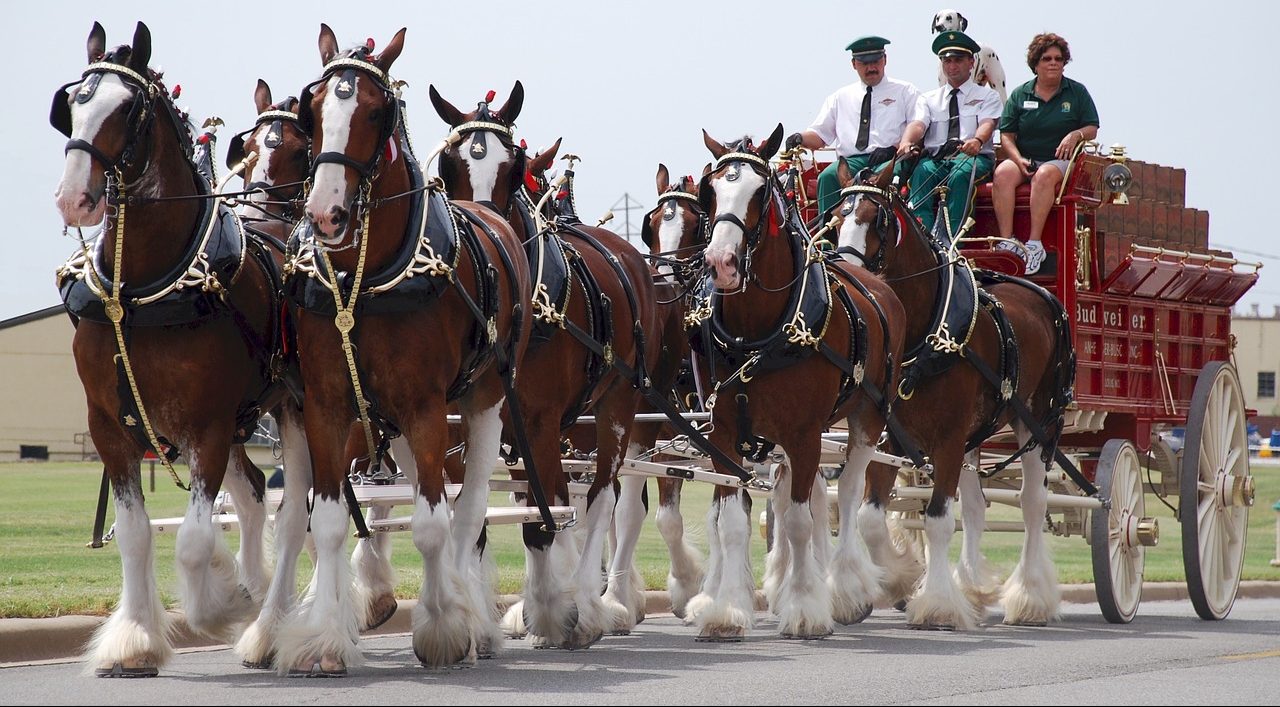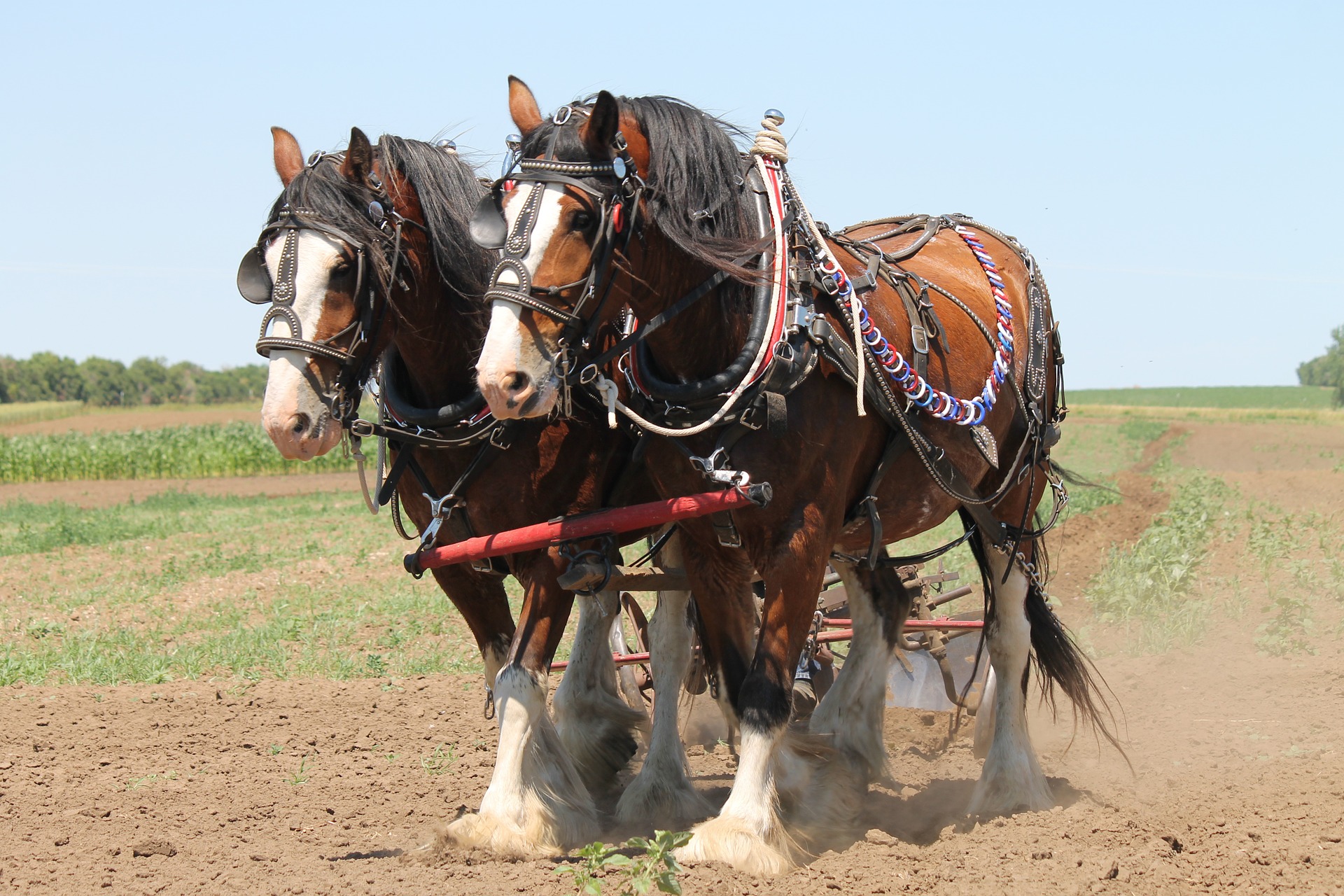This variety or breed of horse has been developed in between 18th to 19th century in Scotland. These Clydesdale horses reached to Canada first with the Scottish people who started to reside there. This animal possesses some specific characteristics which make it different from the other horses.
Features and Characteristics:
The Clydesdale possesses large hooves and marvelous legs feathers. The majority of the Clydesdale horses possesses different colors of the body with white face and legs. The colors of Clydesdale would be black, brown and bay with roan markings and spots. Some of them also possess white stocking legs and hard colors. Clydesdale is primarily developed for agriculture and business purposes, however; now-a-days it is used for riding, driving and sports. One of the important features of Clydesdale is the long silky hair that grows up to the back of each leg. These hairs not only give the beauty to the horse but also provide safety.
Requirements of horses:
The food requirement of this horse is surprisingly less as compared to the other horses having same build and body. They are huge although but their nutritional requirement is not too much. Therefore feeding the Clydesdale horse is much easier.
Uses and Benefits:
This horse is a marvelous variety of horses which is used for multiple purposes now-a-days. These horses are used for commercial purposes, like to advertise the brewing houses and on the farms for agriculture.
Diseases and Illnesses:
There are few diseases that can be acquired by Clydesdale horse, like itch on the skin near feathers and the sun burns due to fair white colors near eyes. These problems should be addressed promptly. Although the Clydesdale horse is a stronger one but still it needs care for more performance and use.
Among different types of horses, Clydesdale horse possesses a reputable position due to their beauty and type of work that could be obtained from it.
The Clydesdale horse is a draft horse bred and “developed” in Scotland.
Dail Chluaidh – Gaelic for Clydesdale is said to be the origin of this heavy horse breed. It is a district in the Strathclyde region in Southern Scotland.
This breed has been on the edge of extinction in the 1960 – 70, but thanks to dedicated horse breeders, its population is slowly and steadily increasing in numbers. It is classified as a rare breed. The Rare Breeds Survival Trust considers it as a “vulnerable” breed.
The Clydesdale horse in his modern appearance is slightly different compared to his ancestors from the 19th century: through well-planned and cautious use of new blood lines the hair coat contains now more white hair.
Clydesdale and Shire horse have been used to mutually improve some of each others breed characteristics:
The big Scott increased in size and got white hair on the whole length of the leg;
The Shire breed became finer, improved skin health of the fetlocks and would develop a silkier feathering.
The modern “Gentle Giant” has increased in height and his body is still well proportioned, showing quality.
Beside all this he preserves a kind and gentle temperament, which makes him a reliable and easy to handle horse.

These versatile horses are bred by farmers and horse enthusiasts who have to invest heavily into this kind of hobby and to ensure the survival of the breed.
The horse does not have to “earn” its living any more with hard farm work.
Exports of horses in the late 19th century to North America and strict breeding programs to maintain quality of the breed helped to increase the population considerably with now annually over 600 new registrations.
The Clydesdale Breeders of the USA are a respectable association with the sole aim to preserve and grow this breed of horses.
Modern use is for showing and advertising of breweries and other, various businesses by pulling brewery wagons and various and colorful types of tradesmen carts.
Also it gains more and more friends amongst horse back riders: show jumping, dressage, endurance rides, recreational riding and driving etc. Crossbreeds perform very well in various equestrian disciplines.
Some Scottish City Councils help to preserve the breed whilst using Clydesdale horses for PR reasons and for work within urban council departments.
This horse breed is gaining more and more interest from companies offering wedding carriage hire services to provide weddings with an impressive framework.
Like in continental Europe, where working horses in the forest industry have been re-established for a long time, the Clydesdale pays also its contribution to the protection of our environment: it is used during wood harvesting for pulling logs out of woods.
It has been proved that a horse does not cause devastating damage to trees and forest grounds.



